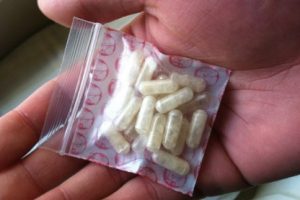 There are many misperceptions about MDMA, also known as Ecstasy or Molly, according to a researcher on substance abuse at the University of South Florida. One of the most common myths is that Molly is a pure form of Ecstasy, says Khary Rigg, PhD.
There are many misperceptions about MDMA, also known as Ecstasy or Molly, according to a researcher on substance abuse at the University of South Florida. One of the most common myths is that Molly is a pure form of Ecstasy, says Khary Rigg, PhD.
In fact, Molly is simply a powder or crystal form of MDMA, while Ecstasy is the pill form, said Dr. Rigg, who spoke about MDMA at the recent National Prevention Network annual conference. “Molly has a reputation for being a pure form of MDMA, but it is often as adulterated as Ecstasy is,” he said.
“I became interested in Molly when I was watching the 2013 MTV Video Music Awards, and noticed Miley Cyrus was singing a song and one of the lyrics was bleeped out,” Dr. Rigg recalled. “I looked it up and realized she had made a reference to Molly in the song.” That is when Dr. Rigg first realized that Molly had crossed over into mainstream popular culture. Before that, Molly and Ecstasy were mostly used by gay men and fans of electronic dance music. “Now it’s being used more widely, including in minority communities,” he said. Dr. Rigg recently completed a study on MDMA use among African Americans and will be publishing his findings in the next few months.
Molly, short for molecule, first became popular in the early 2000’s, but figuring out exactly how many Americans use Molly hasn’t been easy. “It has been difficult to get national data on the popularity of Molly because national surveys have only asked about people’s use of Ecstasy,” said Dr. Rigg. This has recently changed, however, and surveillance systems such as the National Survey on Drug Use and Health have started including Molly in their definition of MDMA. Molly is typically sold in capsules or in a baggie and is usually swallowed, although it can also be snorted.
In recent years, MDMA overdoses at concerts and music festivals have been receiving headlines. But Dr. Rigg warns that, “Many so-called overdoses of Molly or Ecstasy are not really overdoses. When we call them overdoses, the real causes of these deaths are obscured. MDMA deaths are almost never due to taking too much of the drug. The real culprits are heatstroke, hydration issues, and having a pre-existing health condition.”
Many people who take Molly believe that drinking water makes it safe. “You’ll hear that Molly can dehydrate you, and that’s true, but it can also cause you to retain water. So, while it’s important to remain hydrated, people should also be careful not to drink too much water. As a rule of thumb, you only need to replenish the water that you sweat out,” Dr. Rigg says. Certain health conditions are also to blame for some MDMA deaths. Dr. Rigg cautions, “Using MDMA can be dangerous and even fatal for people with conditions such as high blood pressure, heart disease, and seizure disorder.”
Organizations like Dance Safe are trying to reduce the number of MDMA deaths at electronic music festivals and clubs by distributing educational materials about the risks of MDMA. They also provide free water and electrolytes to prevent dehydration and heatstroke, and offer drug-testing kits that instantly indicate whether there are “unknown and potentially more dangerous adulterants” in powder and tablets. Dr. Rigg says that this harm-reduction approach to MDMA use is more widespread in other countries, particularly in Europe, but is gaining traction in the United States.
There is some question about whether MDMA can cause Parkinson’s disease. “Some research indicates that prolonged Ecstasy use can damage the brain’s ability to produce dopamine which could hasten the onset of the disease,” he notes. “An underlying cause of Parkinson’s is a decreased ability to produce dopamine, so there could be a link, but we need more research to say for sure.” Dr. Rigg points out that because of its Schedule I status, research on MDMA is heavily restricted in the U.S. which has hampered how much is known about the long-term effects of the drug.
Dr. Rigg says that before MDMA was banned in 1985, some therapists would give the drug to clients during counseling sessions, because they found it helped them talk about their feelings. Currently, there are several clinical trials taking place to evaluate the potential of using MDMA to help treat PTSD and anxiety.
Despite misinformation surrounding MDMA, Dr. Rigg expects use of the drug to continue rising. He notes that Molly’s popularity has soared in hip-hop/rap music and is now being endorsed by top artists as a sexual enhancer. MDMA use is also being depicted in many popular television shows and movies which serves to normalize use of the drug. He says that for prevention efforts to be effective, we must go beyond simple “just say no” messages, and incorporate aspects of supply reduction, drug education, and harm reduction.
Published
September 2016
 Get Support
Get Support
